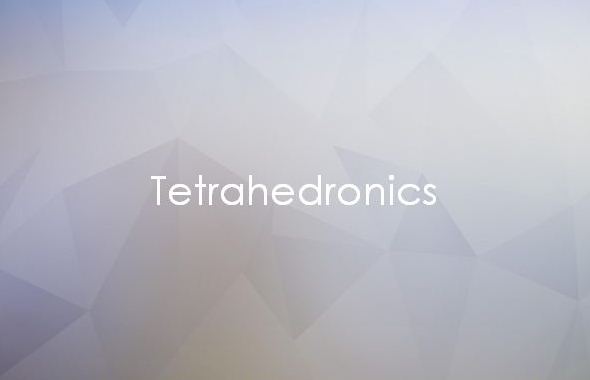“Quintelemental” (or “Pentelemental”) is an adjective. To effectively describe the need for five elements within every system, a noun is necessary.
Since the tetrahedron is commonly called a 3 sided-pyramid because only 3 sides are visible, the name seems particularly appropriate.
Why?
Because we can only clearly see what is visible.
“Tetra” is a mathematical prefix that means “4.” The fourth side of the tetrahedron is the base. Each of the visible sides of the tetrahedron is an equilateral triangle, and therefore, an equiangular one as well, with all angles equal to 60 degrees.
But while the fourth side of the shape is the base, there is also a fifth side – the “in”side. It’s the volume of the shape (which, if you’re interested, is represented as a3/8.48528 cubic units, where a is the length of one of the edges of the shape).
The “in” side is the one the no one sees, and, because it’s a measurement of volume, it takes up more space than the measurement of the surface area of any of the sides.
But why focus attention on it?
Because no one is teaching how to think systemically – and something that gives a form its shape so that it doesn’t collapse merits attention.
And, more times than not, MORE attention than the things that are visible.
If you don’t believe this, then examine your belief and practice of your faith.
School has taught every one of us how to think linearly, and continuing our education process through higher education introduces us to “process” thinking (which is especially important in coding today). Bloom’s Taxonomy defined linear thinking…knowledge leads to comprehension which leads to application which leads to analysis which leads to synthesis which leads to evaluation. In 1990, the progression was revised by one of Bloom’s students, Lorin Anderson, to remembering -> understanding -> applying -> analyzing -> evaluating -> creating.
But…it’s still linear.
If we “begin with the end in mind,” it’s a great way to explain the path toward creating new stuff, and frankly, it’s what every author details when they describe in 150 pages or more how they became successful.
But if we are to understand or analyze, contextualization is important.
For instance, when you studied American History, you probably examined Spain, Christopher Columbus, the colonization of the “new world,” the American Revolution, the Declaration of Independence, etc. Most subjects show the value of the timeline, which is then translated into value within the workplace, and following the path of the timeline is the way to success. After all, in the workplace, projects must be done on time, and significant project timelines are tracked by a Gantt chart.
But what about a “lateral” view of history? We study American History, or World History, or European History, because “what’s next” is an easy way to digest the material. There aren’t many classes called “The 1400s,” even though it sounds like a category on Jeopardy! What happened in that century? Columbus discovered the West Indies, Gutenberg invented movable type and the Mayans, Aztecs, and Incas in Central and South America were doing…what? Not a lot of people can answer that question quickly.
In the same fashion, we like to compartmentalize. Here’s a real-life example.
There was a battle in Congress a few years before the pandemic about raising the debt ceiling of the US Government to avoid default, cutting spending, and raising taxes. The debate was an “either/or” among three elements – and there was the root of the problem. A single solution wouldn’t solve the problem. There were three elements, and a strategy incorporating all three elements had to be employed. Everyone thought a last-minute deal would save the day…and as a response, the stock market dropped almost 300 points (which, strangely, people would approve of today, since thousand-point drops and gains make the roller coaster ride even wilder).
Why?
Because it took so long to come to the decision to do what should have been done months before.
Last minute decisions erode confidence.
In education, there are several 5-element systems at work. For a closer look at these systems, visit The STAFF System, which describes the essence of your school.
More about “The Tetrahedron” next week, so you can learn more about systems theory and systems thinking this year!
© Michael V. Ziemski, SchoolAdvancement, 2012-2025.

